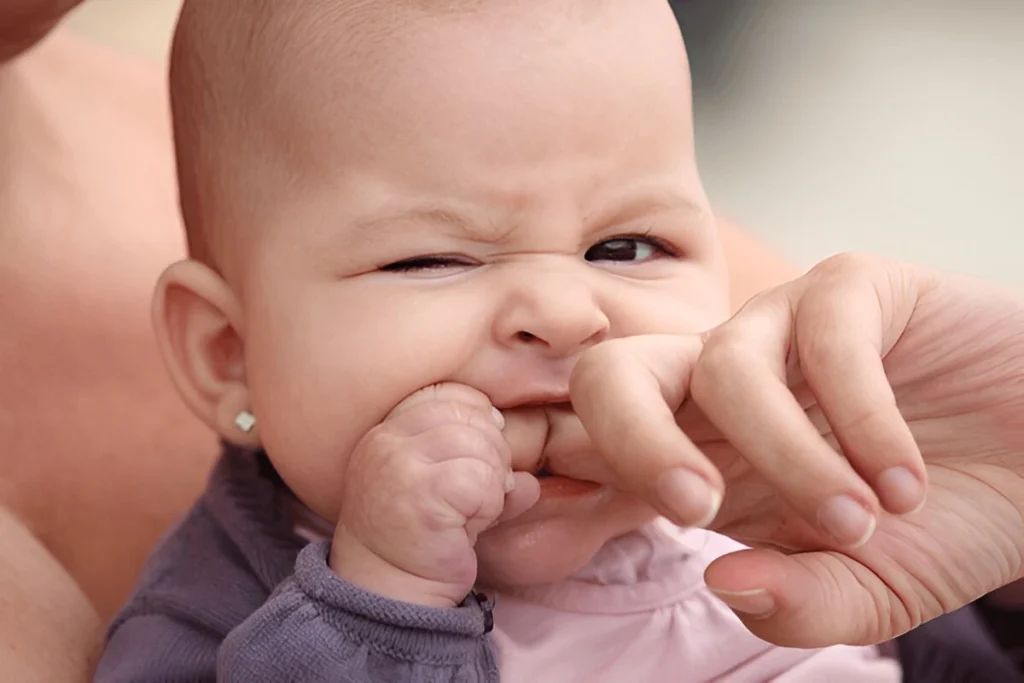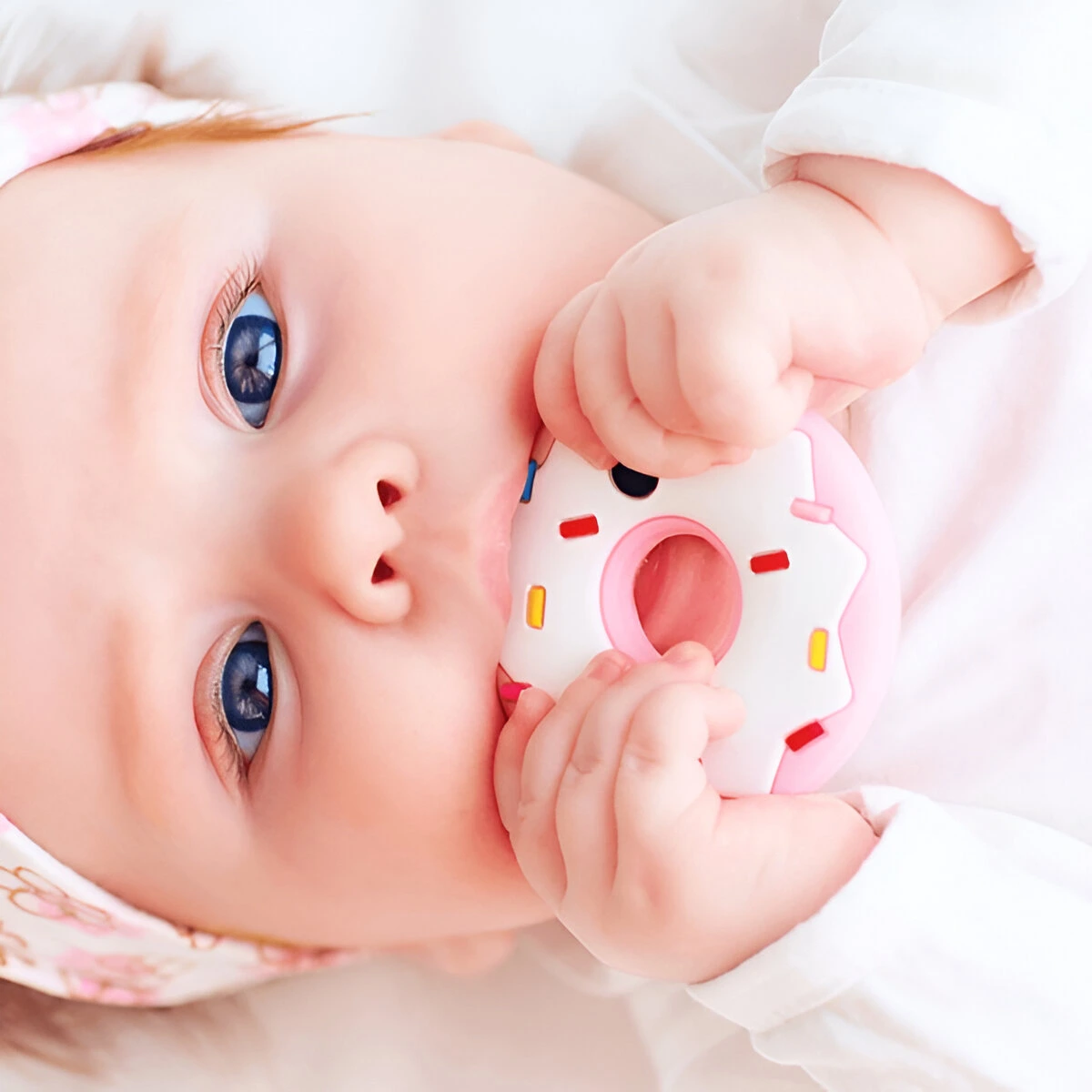Introduction
Parenthood is a journey full of delightful surprises and unexpected challenges. One moment, your baby is peacefully feeding, and the next, you find tiny fingers clawing at your face! If you’ve ever wondered, “Why is my baby clawing at my face during feeding?” you’re not alone.
This peculiar yet common behavior can leave you confused, frustrated, or even amused. Babies are naturally curious and expressive, and their actions often provide a window into their development and emotions. There’s always a reason behind their actions, whether it’s a sign of comfort, overstimulation, or teething woes.
In this article, we’ll dive deep into the possible causes of face-clawing, share practical tips to manage it, and help you foster a calmer feeding experience. Let’s unravel this mystery and bring peace to your feeding sessions!
Why Is My Baby Clawing at My Face During Feeding?
If you’ve ever found yourself dodging tiny claws during feeding, you’re probably wondering, “Why is my baby clawing at my face during feeding?” While this behavior can be perplexing, it’s entirely normal. Babies rely on touch to communicate, explore, and bond with their caregivers. During feeding, when they’re nestled close to you, your face becomes an accessible target for their growing curiosity or emotional needs.

Here’s a breakdown of why this might happen:
- Developmental Curiosity: Around 3–6 months, babies start developing fine motor skills and hand-eye coordination. Their hands are now more active, reaching out to explore new textures—including your skin!
- Emotional Expression: Your baby might claw at your face to seek reassurance or establish a closer connection. It’s their way of saying, “I need you!”
- Teething Discomfort: As tiny teeth push through sensitive gums, babies often redirect their discomfort by grabbing, scratching, or even biting.
- Overstimulation or Frustration: Feeding in a loud or busy environment can overwhelm your baby, and face-clawing becomes a physical outlet for their stress.
Understanding these triggers is the first step toward managing the behavior effectively. By tuning into your baby’s cues, you can address the underlying cause and make feeding sessions smoother for both of you.
Understanding the Behavior
Developmental Milestones
Babies grow and change rapidly, hitting milestones that shape their interactions with the world. Around 3–6 months, their hand movements become more intentional. You’ll notice them grabbing at toys, your hair, and yes—your face.
Why is this significant?
- At this stage, babies learn by using their senses. Touch is essential as they explore textures and shapes. Your face, with its varying contours, becomes fascinating to them.
- This behavior also reflects their developing motor skills, as they’re learning to control their hands and coordinate movements.
Fun Fact: Studies show that babies are drawn to faces over any other object. Your baby’s clawing might be their way of saying, “You’re my favorite thing to explore!”

Seeking Comfort and Connection
Feeding is more than just nutrition—it’s a moment of bonding. Babies crave closeness during feeding times, and face-clawing is often an instinctive way to deepen that connection.
- Emotional Need: Your baby might touch or claw at your face as a way of seeking comfort. This is especially true if they’re feeling anxious or tired.
- Reassurance: Babies find security in your scent, touch, and facial expressions. Touching your face might calm them or reaffirm their bond with you.
Pro Tip: Use this moment to hold their hand or stroke their fingers gently. This can redirect their behavior while strengthening your bond.
Common Reasons for Face-Clawing
Teething Troubles
Teething is one of the most challenging phases for babies—and their parents. The discomfort often drives babies to seek relief through physical actions like biting, chewing, or clawing.
Signs Your Baby Might Be Teething:
- Drooling more than usual
- Irritability or fussiness
- Swollen gums
- Chewing on fingers or toys

During feeding, this discomfort can intensify. Clawing at your face might be your baby’s way of coping with the pain. Offering a chilled teething toy or rubbing their gums gently before feeding can help reduce this behavior.
Overstimulation
Babies can become overwhelmed by too much noise, light, or activity around them. When overstimulated, they often display behaviors like squirming, crying—or clawing.
How to Identify Overstimulation:
- Your baby turns their head away during feeding.
- They appear restless or irritated.
- They cry unexpectedly or seem unable to settle down.
Reducing sensory input can help. Feed your baby in a quiet, dimly lit room to create a calming atmosphere.
Seeking Attention
Babies are natural attention-seekers. If they feel you’re distracted during feeding—perhaps looking at your phone or talking to someone—they might claw at your face to draw your focus back to them.
Solution: Stay present during feeding times. Maintaining eye contact and gently talking to your baby can help fulfill their need for attention without the added scratches.
Is Face-Clawing Normal in Babies?
Yes, absolutely! Face-clawing is an expected behavior and a normal part of development. For most babies, it’s simply a phase that will pass as they learn to control their hands and express their needs in other ways.
That said, every baby is unique. While one child might frequently grab and scratch, another might prefer to explore with their mouth or feet. Celebrate these quirks as part of your baby’s individuality!
How to Prevent Face-Clawing During Feeding
Maintain Nail Hygiene
Your baby’s nails grow surprisingly fast and can quickly become sharp. Regularly trimming and filing their nails is essential for minimizing scratches.

Steps to Trim Baby Nails Safely:
- Use baby-specific nail clippers or scissors with rounded tips.
- Trim nails when your baby is calm or sleeping.
- File the edges gently to prevent sharpness.
Use Mittens or Sleeves
Soft mittens or long-sleeved onesies with fold-over cuffs are excellent solutions to prevent scratching. They act as a barrier between your baby’s nails and your skin without restricting their natural movements.
Distracting Your Baby Positively
Babies love having something to hold. Offering them a soft toy, teething ring, or textured blanket during feeding can keep their hands occupied and away from your face.
Top Distraction Tools:
| Item | Why It Works |
|---|---|
| Silicone Teething Toy | Eases gum discomfort while engaging their hands. |
| Sensory Blanket | Provides textures for them to explore. |
| Soft Plush Toy | Comforts and entertains simultaneously. |
Signs Your Baby Is Overstimulated
Pay attention to these cues during feeding:
- Fussing or crying abruptly
- Turning away or arching their back
- Clawing at your face or body
Solution: Pause the feeding session, soothe your baby with soft humming or rocking, and try again in a quieter environment.
Tips for Calmer Feeding Sessions
Feeding time should be a peaceful bonding moment between you and your baby. If clawing interrupts the calm, you can take specific steps to reduce overstimulation and create a soothing environment.

Create a Relaxing Environment
Babies are highly sensitive to their surroundings, so setting the right mood can make all the difference.
- Dim the Lights: Bright lights can overstimulate your baby. Soft, warm lighting helps calm their senses.
- Reduce Noise: Turn off the TV, lower voices, or play calming lullabies to create a peaceful atmosphere.
- Use a Comfortable Feeding Position: Ensure you’re both relaxed—whether sitting on a supportive chair or using a nursing pillow to reduce strain.
Establish a Routine
Babies thrive on predictability. A consistent feeding routine signals their brain that it’s time to eat and relax.
- Feed in the same spot each time to create familiarity.
- Include pre-feeding rituals like cuddling, gentle rocking, or singing a specific song to soothe your baby.
When to Worry About Face-Clawing
While face-clawing is typically harmless and developmentally normal, specific scenarios warrant closer attention.
When Should You Be Concerned?
- Persistent Aggression: If your baby is clawing at your face aggressively and showing signs of distress during every feeding, this could indicate discomfort or pain.
- Skin Conditions: Redness, rashes, or persistent scratches around their nails may point to eczema or other skin issues.
- Delayed Development: If your baby isn’t achieving other milestones alongside clawing, such as rolling over or grasping objects, consult your pediatrician.

Seek Professional Advice
It’s always better to err on the side of caution. Reach out to a healthcare professional if you notice unusual or prolonged behaviors. They can help rule out underlying concerns such as sensory processing issues or developmental delays.
How to Soothe a Fussy Baby While Feeding
A fussy baby during feeding often results in increased clawing. Here’s how you can soothe them:
- Skin-to-Skin Contact: Holding your baby close to your skin creates a calming effect.
- Rhythmic Movements: Gentle rocking or bouncing helps relax their nervous system.
- Pacifiers: If they’re not hungry but still restless, a pacifier might provide comfort.
- Breaks: If frustration builds, pause the feeding session. Offer cuddles, then try again.
Do All Babies Claw Faces?
Not all babies claw faces during feeding, but most engage in some form of touch to connect or communicate. Face-clawing tends to vary based on personality, developmental stage, and physical needs.
- Active Babies: These little ones are more likely to grab and claw due to their constant exploration.
- Calmer Babies: They may prefer to hold your hand or simply snuggle without using their hands as much.
Understanding your baby’s temperament will help you respond to their unique habits.
Using Toys and Tools to Redirect Behavior
Keeping your baby’s hands busy during feeding can work wonders. Offering safe, engaging alternatives helps redirect their focus from your face to something productive.
Recommended Toys and Tools
| Tool | Purpose |
|---|---|
| Silicone Teething Ring | Soothes teething pain and keeps hands active. |
| Soft Rattle | Adds sensory engagement with sounds. |
| Baby Bracelet | Wraps around their wrist for easy access. |

The Role of Parental Responses in Baby Behavior
Your reactions play a significant role in shaping your baby’s habits. Calm, consistent responses can prevent clawing from becoming a long-term issue.
- Avoid Negative Reactions: Yelling or pulling away abruptly may startle your baby, increasing their stress.
- Reinforce Positive Behaviors: Praise them when they play gently or explore without scratching.
- Redirect Gently: If they start clawing, hold their hands and guide them to a toy or alternative.
FAQs About Face-Clawing During Feeding
- Is face-clawing a sign of hunger?
- Only sometimes. While hunger can make babies restless, face-clawing is more often linked to curiosity, comfort-seeking, or overstimulation.
- Can face-clawing hurt my baby?
- Yes, if their nails aren’t trimmed, they can accidentally scratch their face. Keeping nails short and using mittens can prevent injuries.
- How do I stop my baby from clawing during breastfeeding?
- You can gently hold their hands, redirect them with a toy, or use a nursing necklace to keep their hands occupied.
- Is clawing at the face linked to teething?
- Yes, teething can cause discomfort, leading babies to claw at your face or their own. Offering teething relief can reduce this behavior.
- Should I worry if my baby claws my face aggressively?
- Aggressive clawing could indicate frustration, discomfort, or overstimulation. If it persists, consult your pediatrician.
- Will my baby outgrow this behavior?
- Yes, as they develop better motor control and communication skills, face-clawing typically decreases.
Conclusion: Nurturing a Calmer Bond During Feeding
Feeding your baby is one of the most intimate and rewarding aspects of parenthood. While face-clawing might add an unexpected challenge, understanding its causes and implementing effective strategies can make a world of difference.
From teething troubles to emotional connection, your baby’s actions are their way of navigating the world and building a bond with you. With patience, gentle guidance, and the right tools, you can minimize the scratches and enjoy the tender moments that feeding offers.
Remember, this phase is temporary. Soon, your little one will find new ways to communicate their needs—leaving you with cherished memories of these early milestones.
